100 years of memories
Dec 21, 2021

Tūtehuarewa, an iconic presence in the bay of Koukourarata, Banks Peninsula, stands humble and dignified – as she has done for nearly a century. Easter 2023 will mark 100 years since the whare was built, “He rau tau, he tini mahara – A 100 years, a 1000 memories”.
In preparation for the centenary, photo albums are opening, memories are stretching back, and dust is rising from boxes that have sat untouched for decades. Three taua, born and raised in Koukourarata, share a little of what they remember from the early days of Tūtehuarewa.
Nā Pirimia Burger.
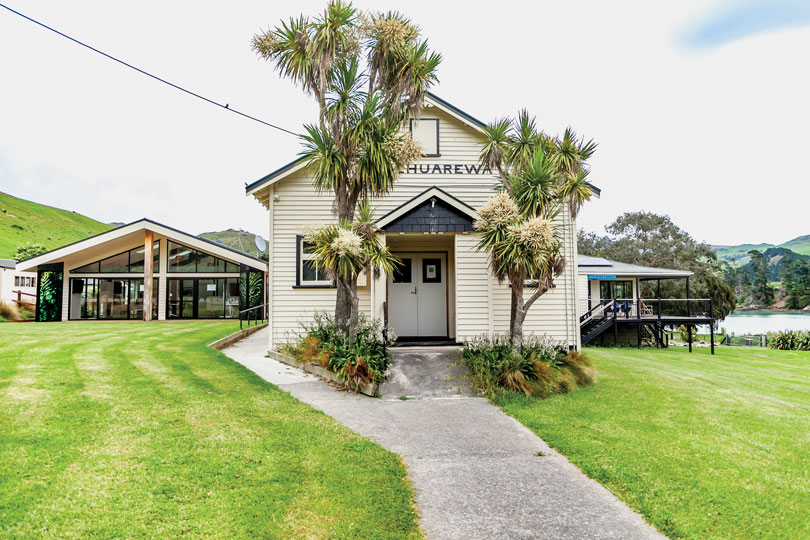
Today she is an elegant taua, always swathed in stylish fabric. But Meri Crofts’ first memories of the hall in Koukourarata place her low on the wooden floorboards sweeping up cigarette butts.
“I was brought up here in Port Levy by my grandmother, even though I called her Mum, Meri Wereta née Ruru. She used to play the piano for the dances here.
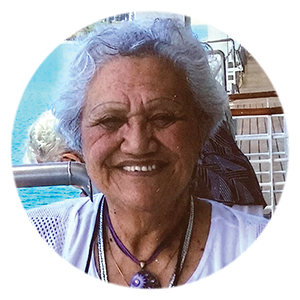 “One Christmas party, I’d been given a little broom as a present and I was sweeping up all these butts to give to my grandmother because she’d get all the tobacco out of them and roll up a new smoke. That was before I even started school. That’s just what I did,” Meri shrugs with a smile.
“One Christmas party, I’d been given a little broom as a present and I was sweeping up all these butts to give to my grandmother because she’d get all the tobacco out of them and roll up a new smoke. That was before I even started school. That’s just what I did,” Meri shrugs with a smile.
“I can remember you doing that” adds Hine Daken, whose father William Huntley played the violin with Meri [senior] at dances in the hall, and beyond, through the 1930s and 40s.
Hine also grew up in Koukourarata. She left as a teenager and returned 45 years later as a taua. What makes Tūtehuarewa special to her is the sacrifice it was built on. Hine says her parents, grandparents and everybody’s aunties and uncles worked hard to raise the money.
“We milked 13 cows up the road; there were cows down the bottom and on the corner. That’s what our people lived on. That was their money. So to build this, to give a quid now and again in the 1920s? To raise all that money? It must have been hard work for them.”
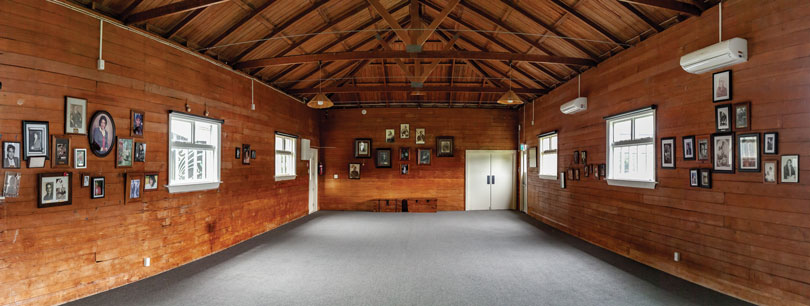
Above: The beautiful wooden interior of Tūtehuarewa rich with memories and adorned with photos of those passed.
How and why Tūtehuarewa was built
The hall was the result of hard work by Māori and Pākehā members of the Port Levy community in the 1920s. The Great War’s solemn shadow, an economic recession, the impact of the Port Levy Block purchase and the making of ‘modern’ New Zealand were eroding the local way of life. A focal point was needed to unify and foster community spirit and survival.
Every Easter the bay swelled with the annual regatta. Yachts, rowboats and motor boats swarmed in from Lyttelton, New Brighton and Redcliffs. The Sumner Brass Band warmed up the atmosphere, while crowds of more than 100 cheered on the 70 or so yachties who were charging up and down the two-mile harbour race course, Te Ara Whānui a Makawhiua.
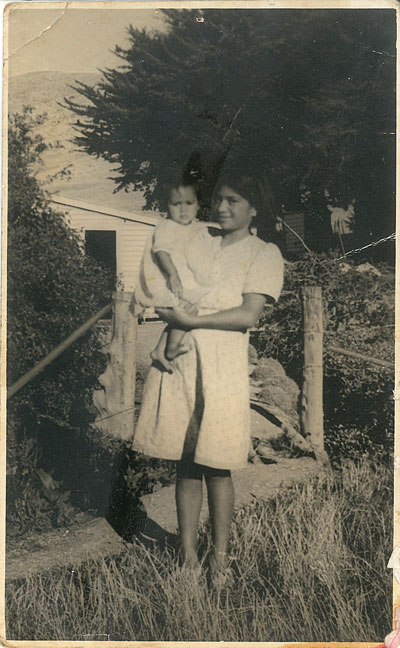
Above: Meri as a child with Matapi Wereta Briggs in 1943.
Māori and Pākehā took part in the races, the baby competition and the ever popular ‘race to catch a greasy pig’. (Just as it sounds). The hapū, long familiar with Koukourarata being a centre of economic activity, made the most of the influx and sold flowers, baskets and other things to fundraise for the Red Cross.
Lobbying from local rowers, residents of Port Levy and others was rewarded in July 1914 when the Lyttelton Harbour Board agreed to build a jetty on the eastern side of the bay, ‘the Port Arthur Jetty’.
Buoyed by this success, lobbyists turned their sights to a community hall. Funds raised at regattas and other events were funnelled into the vision. Maybe the regatta crowd felt a hall would give everyone somewhere to have a cup of tea after the races and celebrate a day on the water with a night of dancing.
But it was more than just a jolly good time the hapū was interested in, with the possible building of a hall on its whenua. It is understood the land the hall stands on was donated by Teone Taare Tikao. The motivations, circumstances, alternatives or discussions around this are yet to be explored.
In any case, whānau Māori saw an opportunity for community development. One of their motivations is expressed in an article in The Press, on 2 September 1922.
“There is no school at present in the Maori kainga, and the distance and bad road the children have to travel to the European school in the winter lead to great irregularity in the attendance. The Maoris hope, if they erect a suitable building, the Education Department will grant them a teacher.”
Turns out the Education Department did grant a teacher and the hall was used as a native school for a time.
Around the time of the original build, the Port Levy Post Office was in operation. It ran in the bay from 1861 to 1940 with Henry Field, a born and bred local, serving as Postmaster for 36 years. A Port Levy Post Office stamp is one of the treasures being shared as part of the centenary celebrations.
Port Levy concert party
In 1922, the Port Levy Hall Committee was formed by the community with Henry Grennell (son-in-law of Teone Tikao) as secretary, and fundraising began.
The Port Levy Concert Party/Cultural Group was the peacock of the Māori fundraising effort. It was a dynamic, fit, talented kapa of accomplished performers that represented many Koukourarata families of the time and included those from the Tainui, Ruru, Manawatū, Kōrako and Grennell whānau.
Provincial newspapers track the group performing regularly around the district to raise funds with programmes of waiata, haka, poi and drama. Rāhera Tainui (known as Aunty Molly) is said to have run the group, supported by Henare Uru (Ngāi Tūāhuriri), manager of the Rāpaki Music company and one-time member of Parliament for Southern Māori.
Each member of the kapa has their own valuable story. Some are clearer than others. It is important to discover more about everyone in the photograph so that each person who worked hard for the hall to be built has their contribution acknowledged 100 years on.
Homestead with a long memory
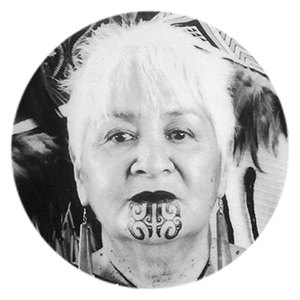 Meri and Hine agree that in the days they are recalling there were many more people living in Koukourarata.
Meri and Hine agree that in the days they are recalling there were many more people living in Koukourarata.
“There were the Manawatus, the Rurus, ‘Dirty Old Mick’, [the homeless man who had been in the navy, fell on hard times and was taken under the wing of the community], then next door were the Timothys,” Meri adds.
Without missing a beat the women name every family living in the bay in the 1950s, sweeping wide across the pā and finishing up on the doorstep of the Grennell homestead – directly opposite Tūtehuarewa.
Still living in the homestead, built by her great grandfather Teone Taare Tikao and grandfather Henry Grennell, is Elizabeth Cunningham. She and her siblings were raised on stories of how the hall was built.
“Our grandfather used to bring the wood to the wharf. They’d bring it up on a trolley and take it into that big meadow where the whole community, not just Māori, but the farmers, everybody contributed to building that whare.”
One of the professional builders was Alfred Claude whose family of eight children, with wife Grace, lived at Port Levy in a tent with a board floor while he helped with the hall. Whānau have said that Alfred built many halls and houses around the peninsula, including the Ruru/Kōrako home.
“It was a community hall. In our day, and before me, it was always called ‘the hall’. But because it had the name Tūtehuarewa, people realised it did have a Māori influence. My nanny Mary Tikao was proficient in Māori language, astronomy and history. She and her sisters were protective of that ancestral name.
A tipuna name like that wouldn’t be given lightly, to just any old hall. She was chosen with purpose and intent.”
Elizabeth Cunningham
Not until the Kaikōura earthquakes of 2016 did Te Rūnaka o Koukourarata discover Tūtehuarewa was built on a foundation of rocks. This was understandably an ‘issue’ in terms of earthquake safety and strengthening, but the rocks remain today alongside more secure and modern piling techniques.
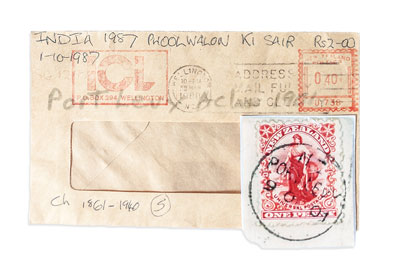 Around the time of the original build, the Port Levy Post Office was in operation. It ran in the bay from 1861 to 1940 with Henry Field, a born and bred local, serving as Postmaster for 36 years. A Port Levy Post Office stamp is one of the treasures being shared as part of the centenary celebrations.
Around the time of the original build, the Port Levy Post Office was in operation. It ran in the bay from 1861 to 1940 with Henry Field, a born and bred local, serving as Postmaster for 36 years. A Port Levy Post Office stamp is one of the treasures being shared as part of the centenary celebrations.
“My memories of the hall in the 50s and 60s are when everybody used it,” reflects Elizabeth, “We used to have a stage in there. We children used to put on plays so in our day the holidaymakers would come down for the concerts.”
“Oh, and boy, did we have dances and parties. New Year’s Eve was so outstanding. In fact I think it got a bit out of hand, people were coming from everywhere! The guitars, the piano, everybody could play something or sing. Gosh the Weretas were out of this world. And so were the Manawatus. It was joyful.”
Tūtehuarewa has adapted to meet changing times and needs. Elizabeth, Meri and Hine all remember the first tangi held in the hall, as recently as the 1980s. Today it is the norm, but the first time did not happen lightly. Up until then the tikanga was to have tangihanga in whānau homes. Elizabeth does recall that weddings were held in the hall from early on. Word is a Tirikatene wedding may have been the first.
The mana of the tipuna
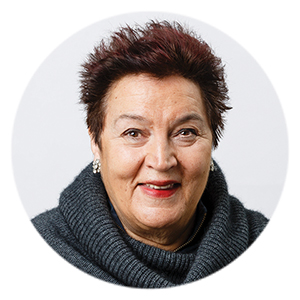 The name of the whare is what makes it special to Elizabeth. “It was a community hall. In our day, and before me, it was always called ‘the hall’. But because it had the name Tūtehuarewa, people realised it did have a Māori influence.
The name of the whare is what makes it special to Elizabeth. “It was a community hall. In our day, and before me, it was always called ‘the hall’. But because it had the name Tūtehuarewa, people realised it did have a Māori influence.
“My nanny Mary Tikao was proficient in Māori language, astronomy and history. She and her sisters were protective of that ancestral name. A tipuna name like that wouldn’t be given lightly, to just any old hall. She was chosen with purpose and intent.”
The tipuna Tūtehuarewa was born at Koukourarata and lived in the 17th century. Moki, who gave Koukourarata its name, issued Tūtehuarewa with the responsibility of looking after the children when he and his war party left the area indefinitely. In honour of her duty, the whare – also tasked with nurturing future generations – was named for her 200 years later.
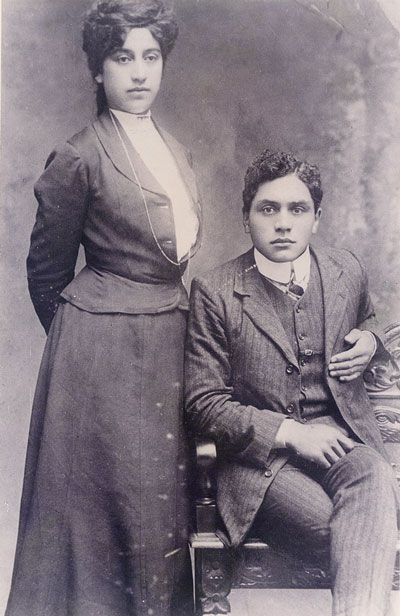
Above: Elizabeth Cunningham’s grandparents Mary Hazel Terita Grennell (née Tikao) (Ngāi Tahu, Ngāti Mamoe, Waitaha) and Henry Grennell (Ngāti Mutunga ki Wharekauri, Ngāti Maniapoto, Ngāti Tama, Te Āti Awa)
The hall is complete … isn’t it?
By March 1923 The Press reported the Port Levy hall was well under construction. A month later an article delivered the full results of the year’s regatta and ended with:
“The proceeds of the regatta will go to the fund for the new hall, which is now nearing completion. A dance was held in the hall in the evening.”
A fortnight later a note from ‘H. Grennell, Secretary of The Port Levy Hall Committee’ thanked those who helped to make the regatta a success, particularly those who forwarded contributions in kind and money.
After that coverage about the completion of the hall or its opening event, if there was one, is not evident. One of the mysteries still to solve is the correct opening date.
A hundred years, a thousand memories
Today Tūtehuarewa is flanked by Te Pātaka o Huikai (the wharekai) and the modern whare wānaka. But other buildings, trees, paint jobs, long-drops, playgrounds, sheep and tenants have come and gone over the near century.
There were soldiers who left the hall for war, parties that heaved her floorboards, feet that stamped the stage, smoky card nights, earthquakes that cracked her bones, meetings that changed history and many, many family life events.
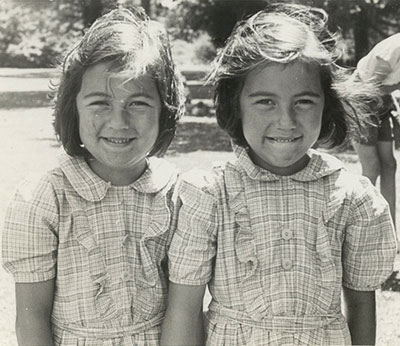
Above: Elizabeth Cunningha with twin sister Linda Grennell
on their first day of school at Port Levy
Summer is a time for whānau to get together and reminisce about times that evoke honeyed memories. Maybe some of those kōrero can piece together the jigsaw that is Tūtehuarewa and her near 100-year history.
 If you have taonga that relate to Tūtehuarewa; a story, photo or memento from any era, please contact the Centenary Committee at [email protected] or join the private Facebook group “Tūtehuarewa Centenary 2023”.
If you have taonga that relate to Tūtehuarewa; a story, photo or memento from any era, please contact the Centenary Committee at [email protected] or join the private Facebook group “Tūtehuarewa Centenary 2023”.